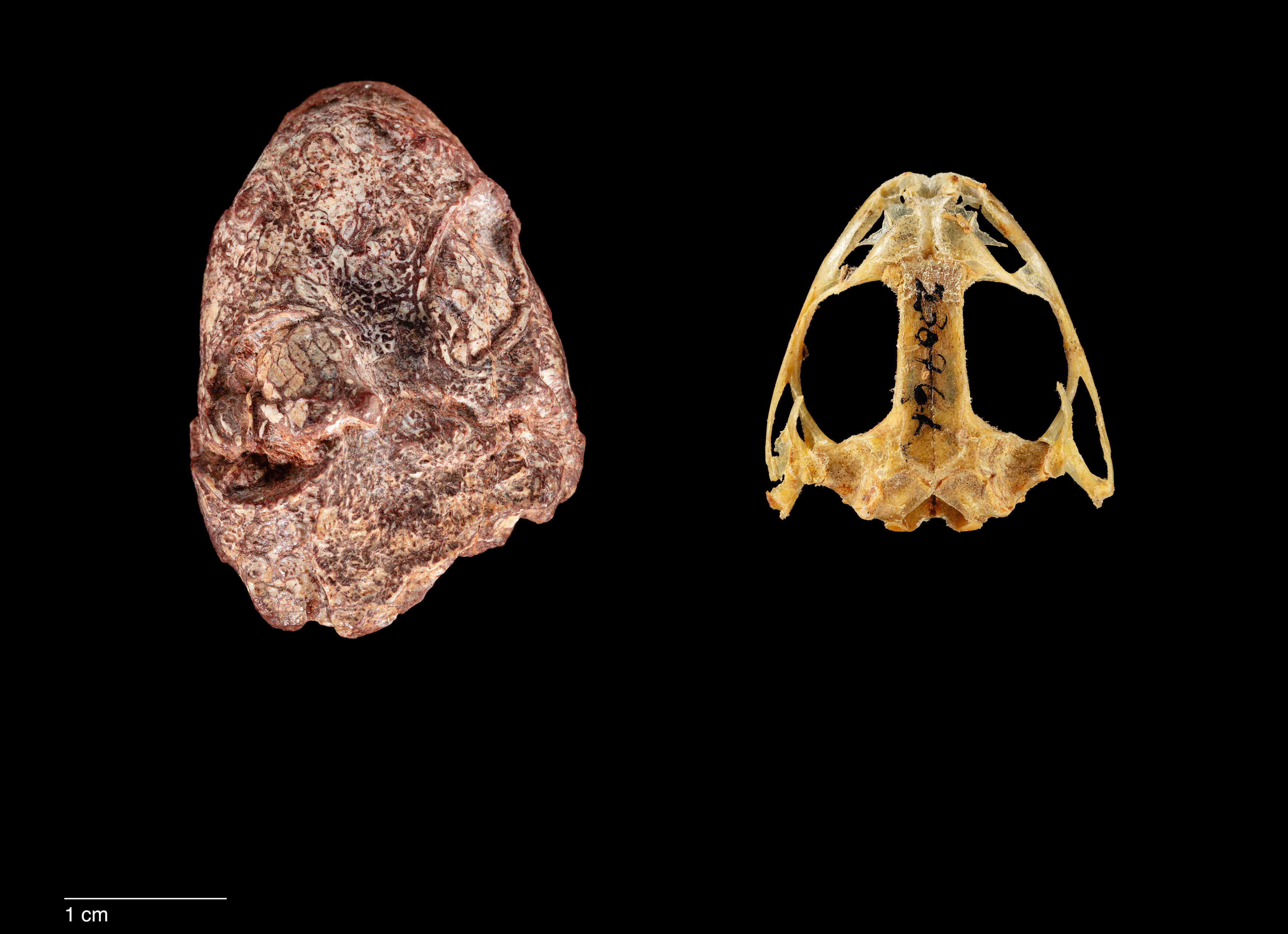An early amphibian has been named after the greatest living (sort of) frog: Kermit. The species, given the scientific title Kermitops gratus, preceded true frogs and is considered by the scientists who described it as a proto-amphibian important to the development of this important animal order.
K. gratus was described from a fossil skull held in the Smithsonian’s National Museum of Natural History since 1984. It was found in 270-million-year-old rocks from north-central Texas. George Washington University Doctoral Student Calvin So got to lead the writing of the description, and having confirmed it was a previously unknown species, to provide the name. While many choose names of scientific mentors or relating to the place where a fossil is found, So and co-authors went for something with broader appeal.
Nine years after scientists discovered a living frog that looks just like the famous Muppet and inexplicably called it Hyalinobatrachium dianae, So took the chance to make things right. Kermit has been honored with a species name previously, Hensonbatrachus kermiti, but this is his first genus.
“Using the name Kermit has significant implications for how we can bridge the science that is done by paleontologists in museums to the general public,” So said in a statement. “Because this animal is a distant relative of today’s amphibians, and Kermit is a modern-day amphibian icon, it was the perfect name for it.”
The “ops” in the name comes from the Greek for face, as it was the unusually wide-eyed shape of the skull that made So think of Kermit.
K. gratus had a skull just 3 centimeters (1.3 inches) long and 2 centimeters (0.8 inches) wide; the dimensions of the rest of its body are unknown. Then, as today, life would have been dangerous for a creature of this size. The same Red Beds in which Smithsonian curator Nicholas Hotton found the fossil also revealed larger reptiles and synapsids, the ancestors of mammals, many of which would have been frogivorous.

The fossil Kermitops compared to a modern frog skull. Kermit’s ear is at the bottom. Like modern frogs it is covered by an external tympanum or eardrum. Boney shingles within the eyelid that would have protected the eye can be seen at mid-right.
Image Credit: Brittany M. Hance, Smithsonian.
There is an immense backlog of fossil discoveries waiting to be described, into which Kermit the ancestral amphibian fell – until rescued by So, at the suggestion of Dr Arjan Mann.
Many of K. gratus’s features are common to other amphibamiforms of the era, but a few are unique, particularly an apparent fontanelle in the upper jaw.

Calvin So holding Kermitop’s skull in the palm of his hand, as opposed to the traditional interaction.
Image Credit: Phillip R Lee
Based on the shape of its skull, K. gratus is thought to have fed on grub-like insects, a reasonable precursor to Kermit’s stated diet of flies. The authors suspect it more closely resembled a modern salamander than a frog, but could be ancestral to both.
Unsurprisingly, amphibians do not fossilize as well as species with more solid bones, so little is known of their ancestry, making Kermitops an important development.
“Paleontology is always more than just dinosaurs, and there are lots of cool evolutionary stories and mysteries still waiting to be answered. We just need to keep looking,” Mann said.
Perhaps being honored in this way will make Kermit feel it’s a little easier being green. It also leaves open the possibility that if a slightly younger and smaller species is found, it could be called Robin. If only Jim Henson had lived to see it – but at least he got a sea slug.
The scientific description, including the name, is published in the Zoological Journal of the Linnean Society.
Source Link: 270-Million-Year-Old "Kermit The Frog" Fossil Found Hiding In Museum Collection